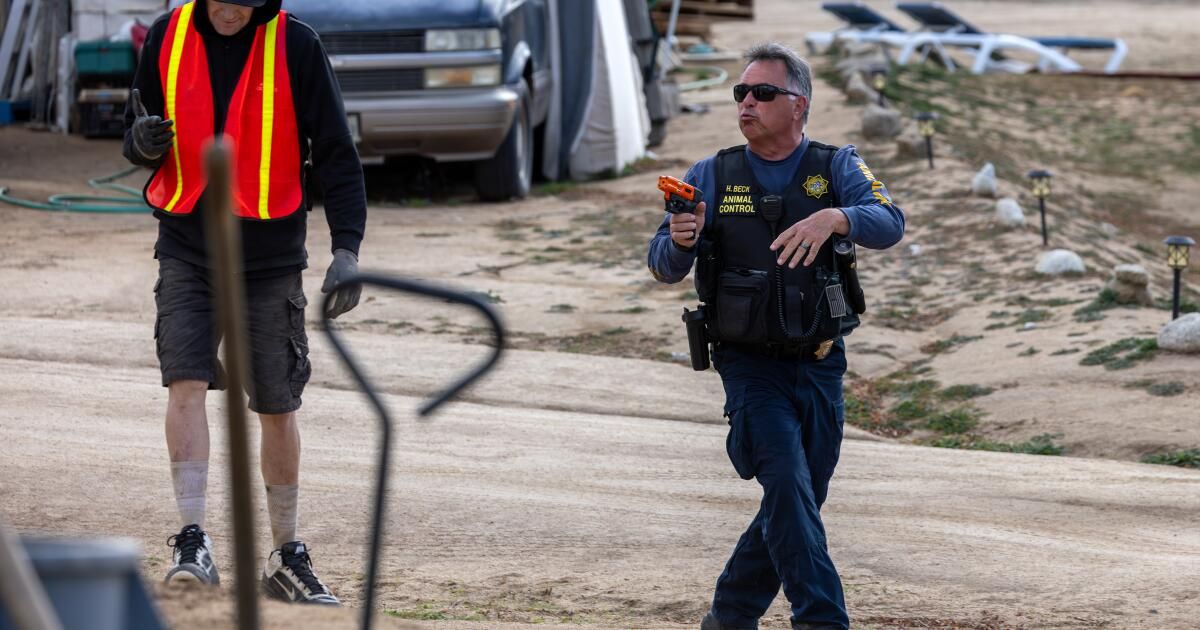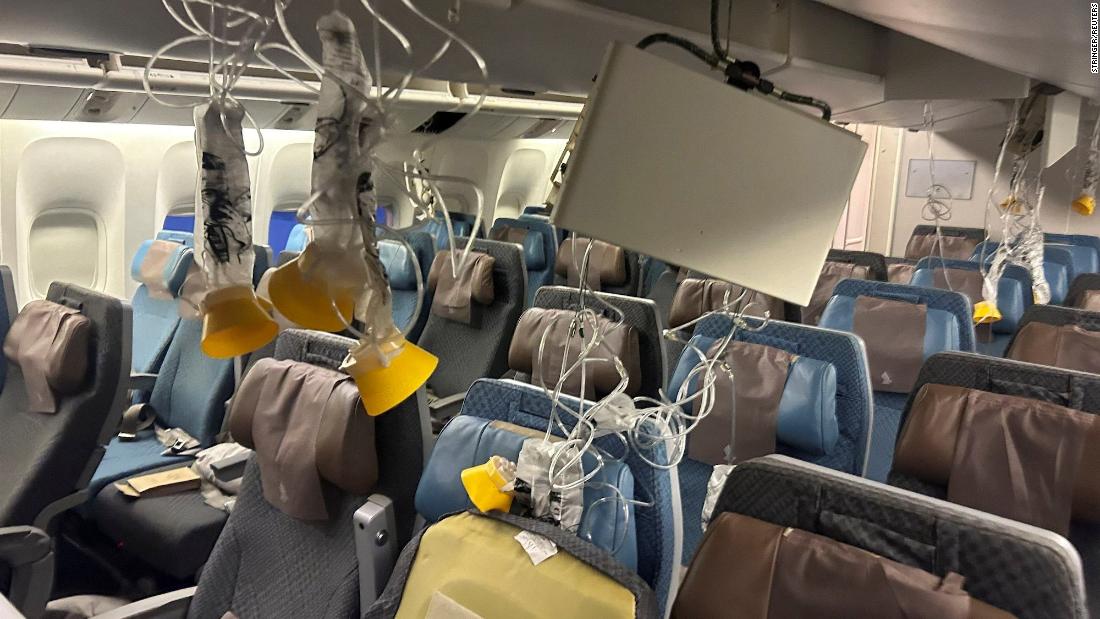Drive down any of the long, bumpy back roads of this dusty Riverside County community, and it won’t be long before you feel like you’ve fallen off the grid.
Telephone poles disappear. Traffic signs and lights are nowhere to be seen. And ramshackle houses and fences hide behind weathered manzanita and chapparal thickets.
If you are quiet, you will hear the wind blowing through the valley, or perhaps the tinkling of a wise sparrow in a nearby bush. But if you make a sound, one, two, three or more barking and growling dogs climb towards you; dogs that Riverside County Animal Control Officer Harvey Beck says are no joke.
Earlier this spring, a pack of stray dogs (identified as three Labrador mixes, two Queensland blue heels and a husky) massacred a herd of goats and two sheep. The bloodbath was documented on Facebook with shocking photographs and descriptions.
In 2018, a pack of canines killed a woman in broad daylight.
An unleashed dog flees after being shot with pepper gel when he and other dogs ran towards an animal control officer in Aguanga.
(Irfan Khan/Los Angeles Times)
But what is to be feared is not the dirty-looking dogs that run, growl, bark and gnash their teeth behind the fences when a visitor approaches. Instead, Beck says, it’s those with unlimited access to the outside world that cause concern: those who roam in packs, chasing and killing pets, livestock and wildlife.
While the problem is particularly serious in Anza, it is not unique.
According to reports from the U.S. Department of Agriculture’s Wildlife Services, domestic dogs are the second deadliest predator of livestock, followed by coyotes first.
For sheep, coyotes and dogs account for more than 70% of predator losses, and dog killings are on the rise. In 2014, dogs killed approximately 13,200 adult sheep. By 2019, that number had increased by more than 10,000.
For cattle and calves, a 2015 report shows that dogs accounted for 11.3% of deaths. Wolves killed only 4.9%.
But research on the topic is scarce in the US.
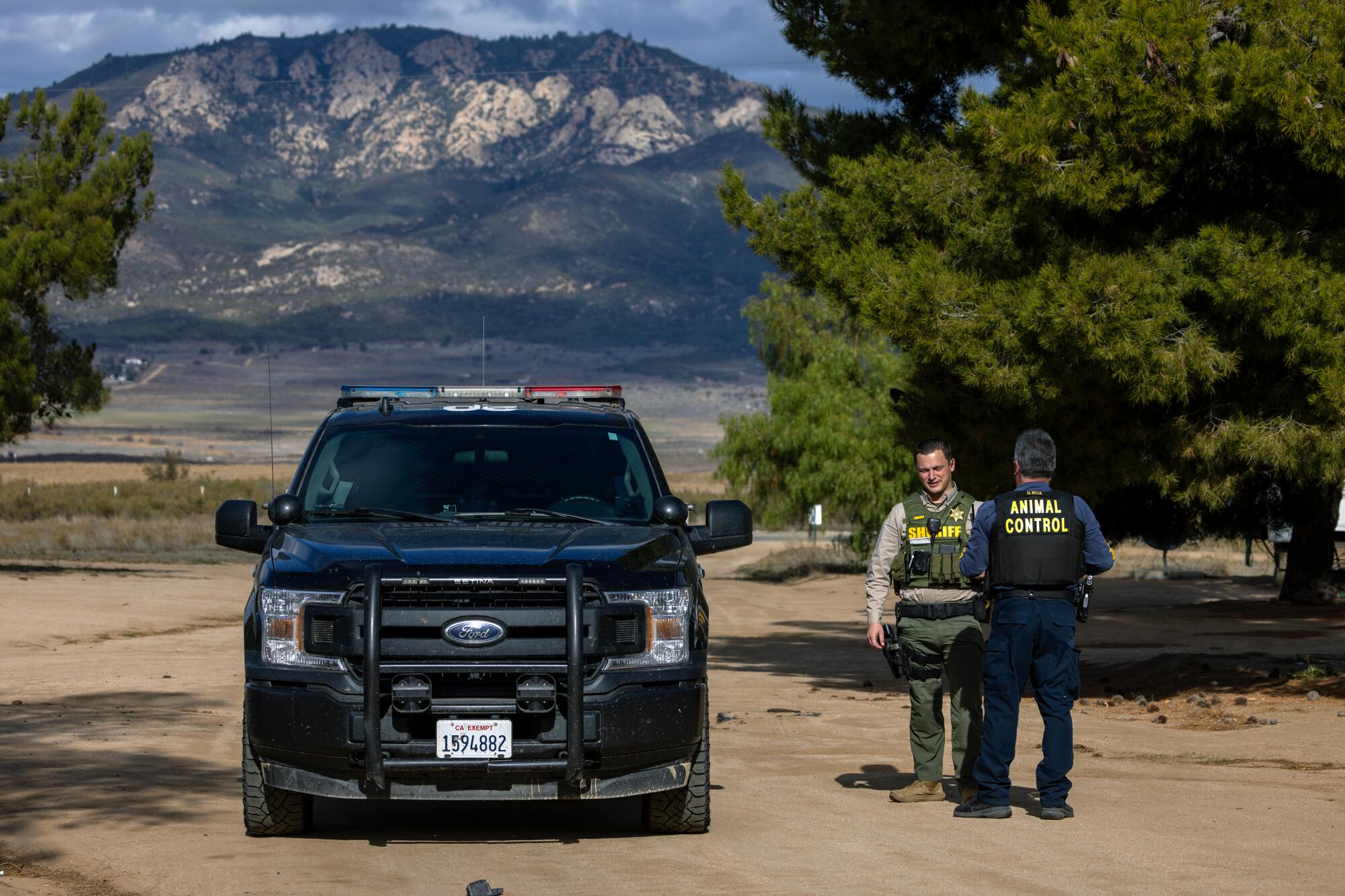
Animal control officer Harvey Beck, right, speaks with a Riverside County sheriff’s deputy while responding to a report of loose dogs attacking another dog in Aguanga.
(Irfan Khan/Los Angeles Times)
When asked about the issue, a USDA spokeswoman said it was difficult for wildlife officials to determine whether the dogs are wild, free-roaming or unleashed pets.
Calls to other federal and state wildlife agencies elicited similar responses.
“It’s not something we usually deal with,” said Tim Daly, an official with the California Department of Fish and Wildlife. spokesman.
But nongovernmental researchers and ranchers say the problem is real, citing USDA figures as well as their own research and experiences as evidence.
“I remember my boss telling me, ‘Well, we’re in the wildlife business, not the dog business,’” said Julie Young, an ecologist at Utah State University who worked for the USDA for 12 years. “Our mission was to reduce conflicts with wildlife. So I think there’s a gray area where, you know, who handles wild, free-roaming dogs? And who shouldn’t manage it?
In Riverside County, the Department of Animal Services is working hard to be proactive about the problem: bringing a spay and neuter bus to the region, providing occasional educational and vaccination clinics, and urging people to keep their pets inside and behind fences.
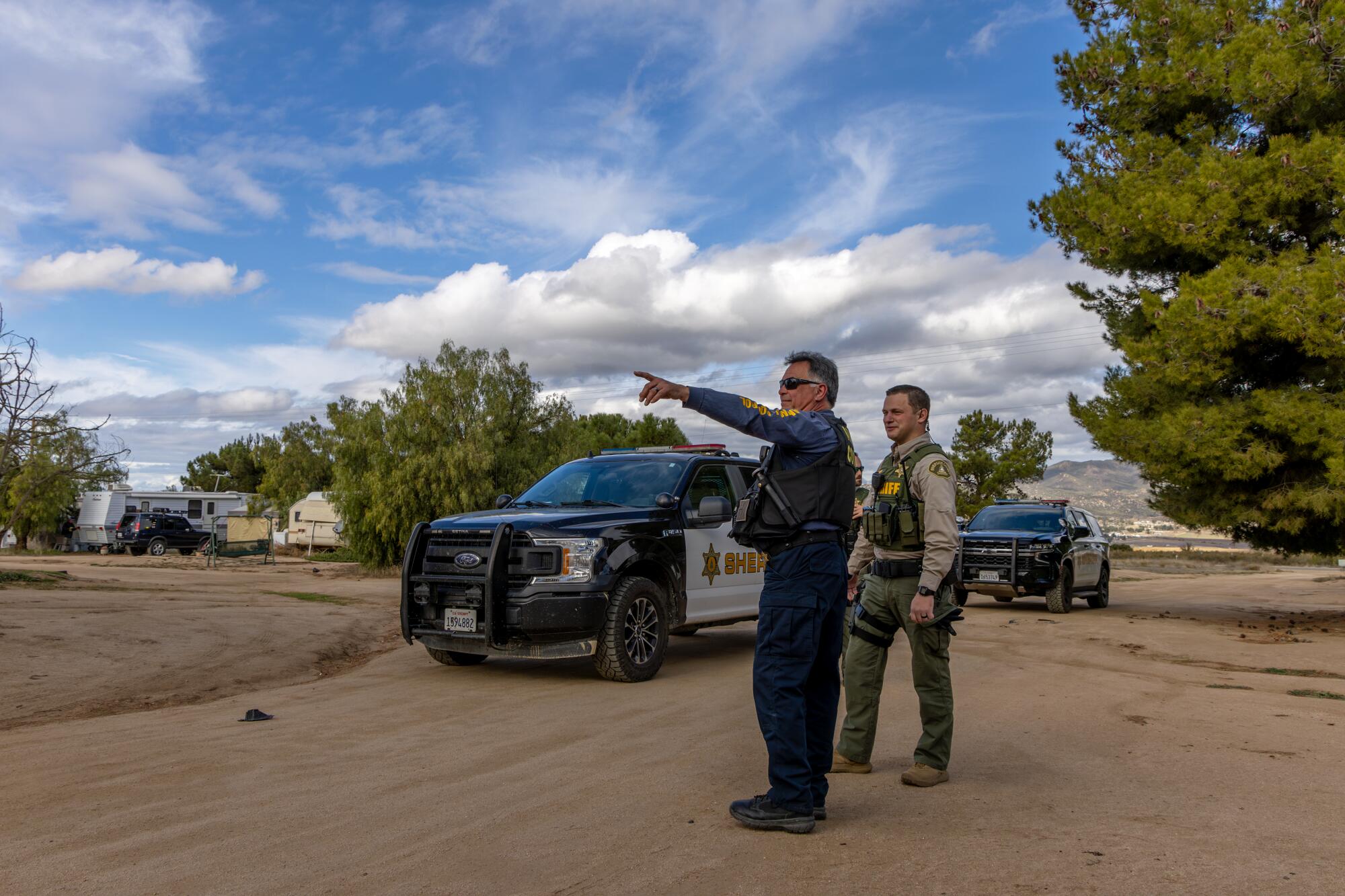
Riverside Animal Control Officer Harvey Beck points out and says patrolling for packs of dogs can be a frustrating job.
(Irfan Khan/Los Angeles Times)
“For years we tried the direct law enforcement route,” said county animal control field services commander Josh Sisler, who got into big trouble in the 1990s after conducting a “raid.” of dogs biting children at bus stops.
“That was my first contact with politics,” he said. “People didn’t like their dogs being carried. “They liked the fines even less.”
But he has learned that the best approach is communication and education. He said the biggest problem for animal owners in Anza and other remote areas is access to affordable veterinary care.
“Once they found out about the problems and were given the opportunity” to spay, neuter and vaccinate, most people took charge, he said.
Unfortunately, according to Beck, it only takes a few bad actors (and a couple of playing seasons) for problems to spiral out of control again.
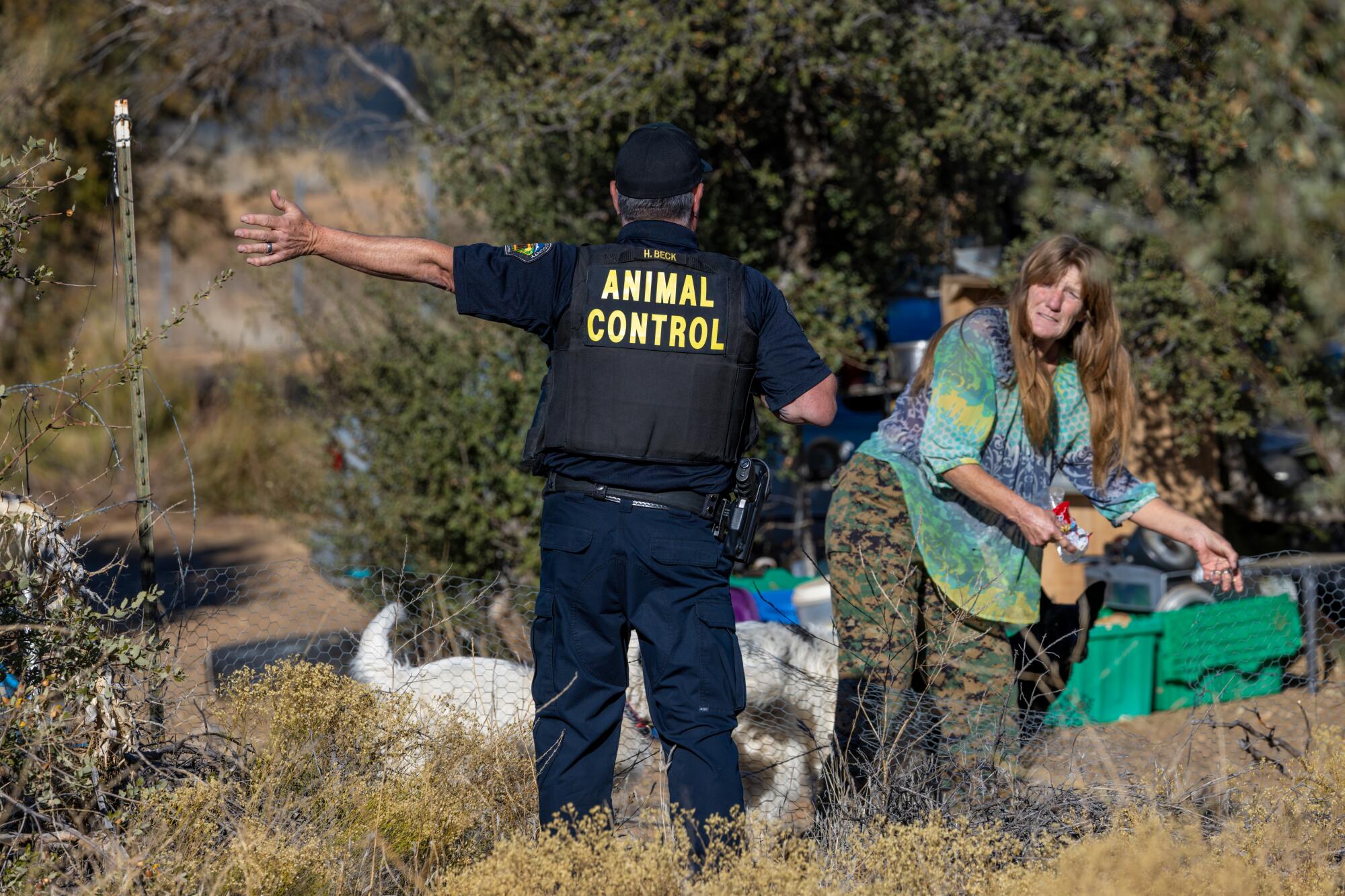
Animal control officer Harvey Beck speaks with a dog owner during an animal welfare check in the rural community of Anza.
(Irfan Khan/Los Angeles Times)
The animal control officer patrols an area of 361 square miles, a region that extends south from Hemet to the San Diego County line and east almost to Palm Springs. Finding, detecting or trapping loose dogs here can seem futile at times.
Underbrush and bushes obscure the hiding dogs, and two Cahuilla reserves run through their patrol area, making it impossible in some cases to track the dogs or find their owners.
“They just cross that street and ‘poof’ they’re gone,” he said, pointing to Cahuilla’s land across the street.
Young, the Utah researcher, said there is a lot of research outside the United States on the problem of free-roaming domestic dogs. Studies conducted in Brazil, India and Italy suggest that impacts on livestock and wildlife are significant. Researchers say there are at least 700 million dogs worldwide, and 75% are classified as free-roaming.
And it’s not just cattle that are at risk. Free-roaming dogs are also known to attack wild animals, including endangered species such as kit foxes and desert tortoises. They are also known to transmit diseases.
“Us [tend to] “I think a lot of dogs might not have population-level impacts, but that’s probably not true when you’re dealing with an endangered species,” said Young, who noted that dogs don’t have to kill to harm animal populations. Deer, for example, face special difficulties if “just before winter and they are desperately trying to put on weight, or at the end of winter when they are barely making it, harassment from a pack of free-roaming dogs could make or break an animal.” “, said.
Young saw the wildlife devastation firsthand while researching in Mongolia, where companion and working dogs often roam free. His attacks on wild animals were horrific, he claimed.
As domesticated animals, dogs lack the dexterity and efficiency of wild predators, he said.
“Dogs don’t have all that drive and all that knowledge anymore,” he said. “Deep down, they still have that genetic trait activated when they attack. But they don’t have the skills or learning from their parents like a wild wolf or coyote. And that is why it is a much more traumatic experience for its prey.”
Dan Macon, a sheep rancher in the Sierra foothills outside Auburn, said it’s a statewide problem and is growing as more people move to that urban-wildlife or urban interface. -agricultural.
“I’m not too worried about coyotes, lions or black bears, but I am worried about domestic dogs,” he said.
In 2011, four of his sheep were killed by a neighbor’s dogs. It was the most brutal murder he had ever seen. The animals were torn apart in what he described as a cruel, terrifying and probably very painful death.
“Before, if your dog came on my property and hurt my animals, they would shoot him,” said Macon, who is also a natural resources advisor for the University of California Agriculture and Natural Resources. “Everybody knew”.
But things don’t work like that now. He said that as people increasingly move to these rural areas from cities and suburbs, they bring with them different cultural customs. They don’t shoot dogs.
In mid-December, an Anza resident named Chance (she declined to provide her last name) stopped her truck to talk to a Times reporter as she pulled out of her driveway.
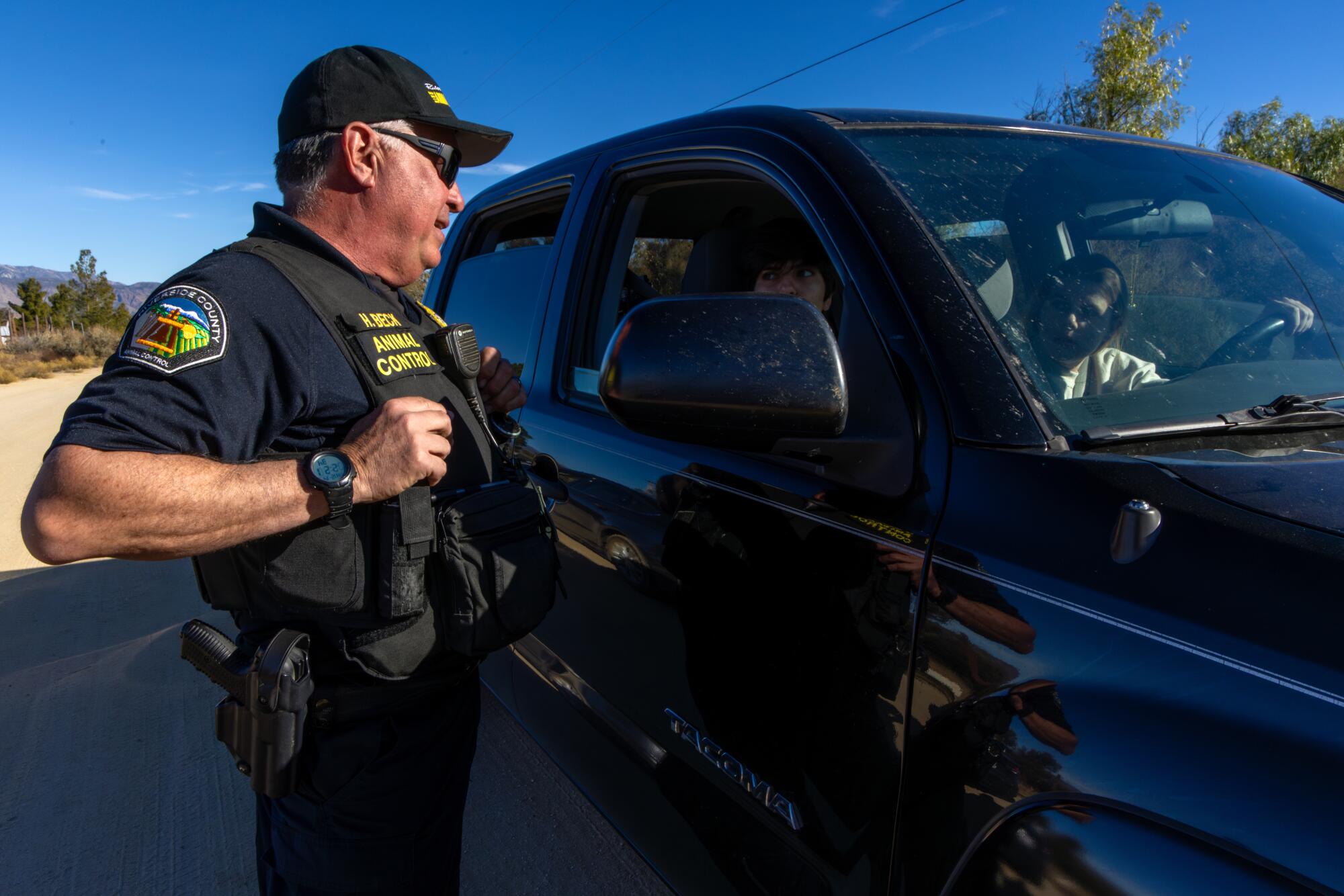
An Anza resident stops to complain to Riverside County Animal Control Officer Harvey Beck about loose dogs.
(Irfan Khan/Los Angeles Times)
She said the dog problem has gotten so bad in recent years that she doesn’t walk on her path for fear of being attacked by “bush puppies.” She called Animal Services several times, but said they told her to shoot the marauding dogs.
“I don’t feel good doing that,” knowing they may be someone’s pets, she said.
When asked if shooting nuisance dogs was a common recommendation by animal control, Sisler, the Riverside County field commander, said no and expressed both surprise and disbelief that he had been told such a thing. .
While it is legal to kill a dog if it is on your property, he said, “we think there are better ways to address the problem.”
Beck, who is 60 and in his previous life built custom guitars for rock stars, doesn’t think the dog situation will be resolved anytime soon.
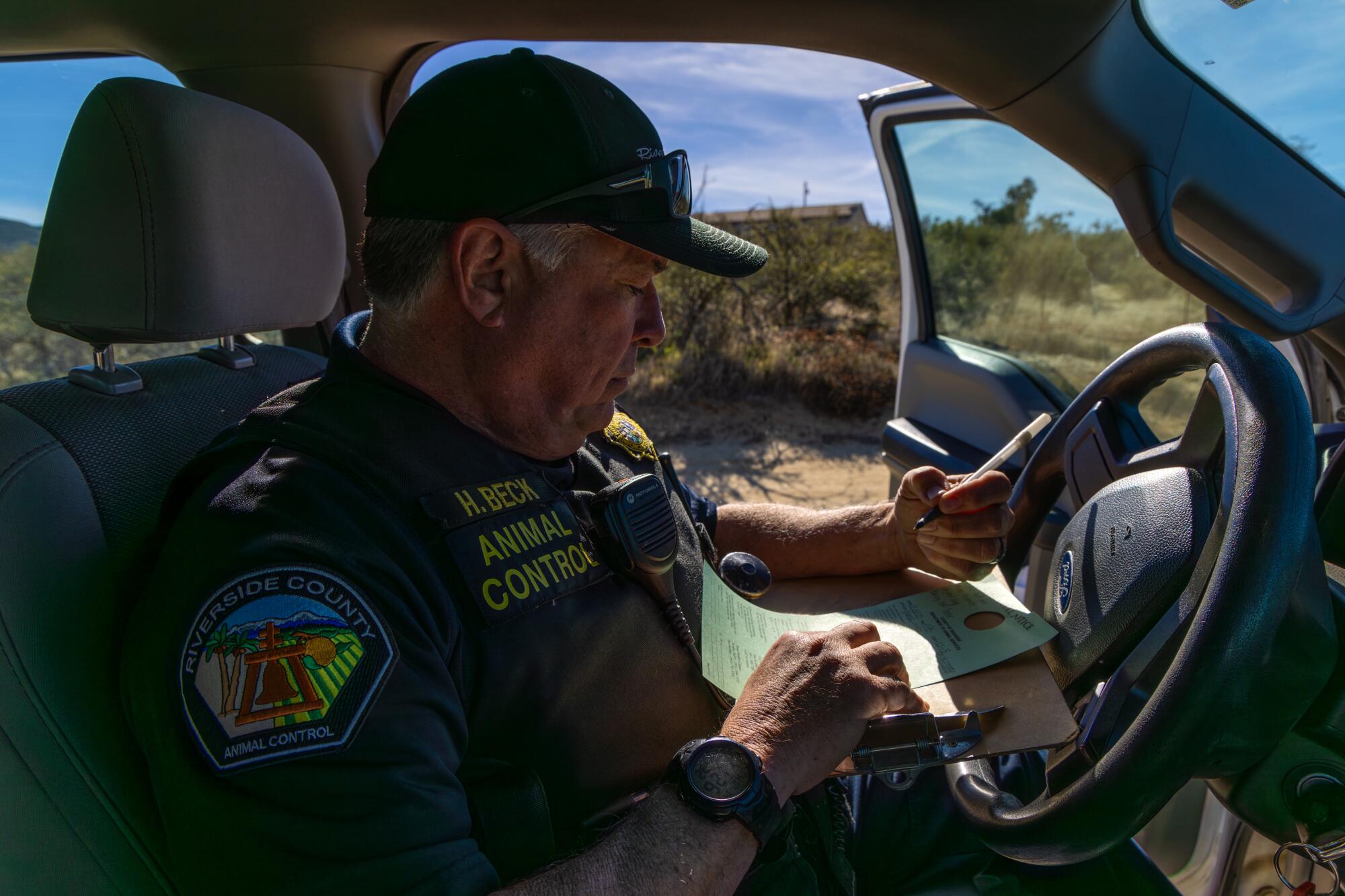
Animal control officer Harvey Beck writes a second notice to a resident whose dogs were found loose in the rural community of Anza.
(Irfan Khan/Los Angeles Times)
He said part of the problem is the place itself: Anza attracts people “who don’t want to follow the rules or laws. “They think they can escape that up here.”
And it is because of this remote and laissez faire attitude that people also come here to get rid of dogs they no longer want.
He knows this because he has found several suburban and urban animals identified by microchips.
“Look around you,” he said, reaching out toward the desolate, uninhabited horizon. “What better place to do something like that? You just stop, open the door and kick the dog out.”
Times staff writer Anthony De Leon contributed to this report.

